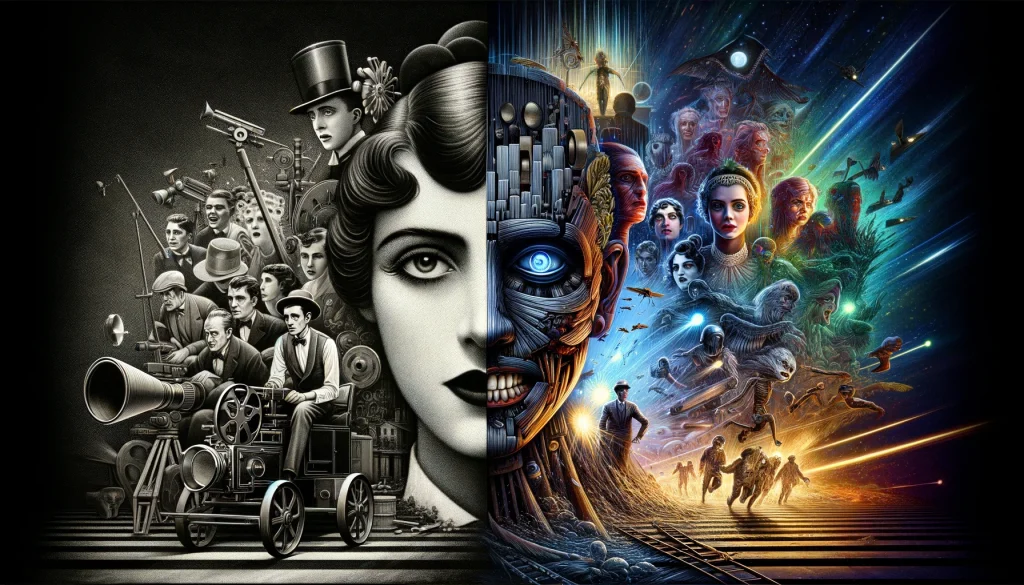Cinematography forms the crux of filmmaking, an imperative ingredient in the narrative aspect of defining and shaping the very essence of cinema. Unlike other art forms, the mode of capturing, conveying, and manipulating images in films profoundly influences the visual narrative, marking a difference in viewing experiences. Often dubbed the ‘art of motion picture photography’, cinematography has been evolving and significantly shaping the film industry, imprinting its mark on the visual storytelling language. It relies on technology, aesthetics, and the creative prowess of cinematographers, and its evolution bears testament to the evolution of the film industry itself.
From the simple, static shot of a ‘traumatograph’ in the late 19th century to complex camera movements, advanced lighting setups, and high-definition digitization in the 21st century, the path of cinematography has unfolded an intriguing narrative of technological innovation. As technology facilitated the introduction of different filming techniques like crane shots, dolly shots, or aerial shots, it not only expanded the story-telling capacity but also revolutionized the cinematic landscape.
Preeminent examples can be seen in films such as Orson Welles‘ ‘Citizen Kane‘, which, through its innovative use of deep focus shots, changed the way films were viewed. Identically, the invention of Technicolor brought a vividness into the world of black and white cinema, boldly demonstrated in classics like ‘The Wizard of Oz‘ and ‘Gone with the Wind‘, leading to a visual spectacle that was not only impressive but profoundly influential for films that followed.
In the contemporary setting, the shift from analog to digital filming further revolutionized cinematography, ushering new possibilities for filmmakers. This digital revolution, marked by 24p HD video, allowed filmmakers to make visually splendid films at reduced costs. James Cameron‘s ‘Avatar‘, shot primarily in 3D, raised the bar for future films, transforming audience expectations and creating a craving for immersive viewing experiences.
This technological leap has also empowered cinematographers to experiment with various perspective shots, varying natural and artificial light sources, and creatively manipulating digital color schemes to engage the audience emotionally and psychologically. The explosion of colour grading in digital cinematography – with examples including ‘The Matrix‘ and its distinct green hue – has enabled cinematographers to play with audiences’ emotions more directly; visual tones now come with an evocative power that contributes to the film’s overall feel.
Cinematography is not just the technical aspect of a movie; it constitutes the visual soul of films. A film’s thematic elements can be communicated as much through the lens of a camera as through the lines of a script, shaping a viewer’s interpretation and response to the film. Hence, a cinematographer’s role moves beyond capturing images; they paint a picture that aligns with the director’s vision and helps tell the story as visually and powerfully as possible.
Cinematic pioneers like Roger Deakins with works like ‘1917’ and ‘Blade Runner 2049′ have almost reinvented cinematography, showcasing how movie imagery could be surreal, yet grounded in reality. Their unique filming techniques brought unknown depth to the characters, breathing life into the on-screen stories, further solidifying the unignorable relationship between cinematography and the film industry’s evolution.
Comparably, many film genres owe their unique look and narrative style to cinematic techniques specific to them. Film noir, for instance, relied on low-key lighting and unique camera angles to evoke an atmosphere of cynicism and despair, while westerns were defined by their wide shots and panoramic views of desolate landscapes.
To encapsulate, cinematography serves as the cornerstone in the creation and development of the film industry. Its evolution has constantly rejuvenated filmmaking, pushing boundaries, and deepening our understanding and appreciation of cinema as a medium of art and communication. The advent of newer technological advancements in the field continues to push the envelope further, ensuring that cinematography remains integral to shaping the future of the cinematic universe.


